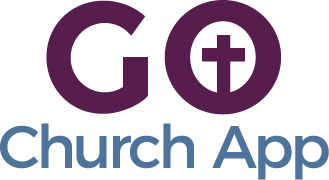First Evangelical Covenant Church of Grand Rapids, MI was one of our very first churches to begin using the Go Church App platform. We worked very closely with FirstCovGR to figure out exactly how our features could help their church go further in achieving their mission. This article explains how we create a custom church app by telling the story of working with FirstCovGR to build their custom ministry app (iOS / Android).
How we create
When building custom apps for churches and ministries, we follow what we call a “4-D system.”
Define > Design > Develop > Deploy
Define
During this process we seek to understand the uniqueness of your church.
- How big is the congregation?
- How involved is the average member?
- How many different ministries do you offer?
- What are your current modes of communication?
- What communication mode is the most effective?
- What communication mode is the most well-liked by your church?
- And the list goes on…
Answering these questions, and finding that there were questions that FirstCovGR didn’t know the answer to, like, “What communication mode is the most effective?” and “What communication mode is the most well-liked?” helped us define exactly what they wanted and needed out of a custom app. That led us to a clear plan for designing an app unique to their needs.
Design
Whether you are aware of it or not, your church or ministry already has a established brand identity. That takes some of ground work out designing an app. Most likely, you already have a website. Consistency is one of the most crucial components to building a brand that people trust and are loyal to. For FirstCovGR, we looked to their newly re-designed website as a guideline for design.
The bright blue and green used throughout their website and usage of Google’s own design language, Material Design was what we used for inspiration when designing the FirstCovGR app.
Websites vs Apps
When designing a new custom app for your church or ministry, it helps to understand the key differences between a website and an app. Websites are more informational than interactional, while apps are more interactional than informational. What does that mean? Websites are more for discovery, while apps are more for engagement. If you are looking for a new church, you do a search on Google for a church. There is more of a commitment to download an app than there is to visit a website. Websites are great places to define and explain ministries, while an app is a great place to remind people to engage with those ministries and gather information from people.
Example: Every Fall at FirstCovGR there is a large campaign to get regular attendees/members involved in a small group if they aren’t already. Utilizing their custom app, FirstCovGR sent out push notifications to both look for host homes for these small groups and to allow interested attendees to request to be a part of a small group. This process was much more highly effective than email and website forms.
Develop
Once the design is understood, we start adding features, or what we also refer to as “tabs” in the app. Features are typically organized and identified by icons. The human eye identifies an image much faster than a word, which makes icons so powerful. Each icon/name pair in the FirstCovGR app represents a specific feature. We included the following features right away:
- Calendar – a mobile-friendly link to their Google Calendar so events sync automatically
- Give – simply a link to their online giving (we can link to any only giving or suggest a great company)
- Email us – a tab with a list of staff members where you can fill out a simple form to contact that staff member (the form sends an email to the staff member)
- Notifications – the tab that allows your app users to subscribe to ministry area specific notifications
- Small Groups – a tab to fill out interest in joining a small group where users can select their available days to join a small group
Several other features were added and many are used dynamically for short periods of time. FirstCovGR did an Amazing Race event and used the app to collect team registration forms.
Deploy
This is last phase of creating a custom app for churches. Before we submit your custom app to the app store, we take it for a test drive. We look for bugs to squash, broken links, missing information, etc. Once it passes our pre-deployment checklist, we submit the app to iOS and Google Play (Android) app stores. Android typically takes 1 business day to process, while iOS can take up between 7-12 business days.

